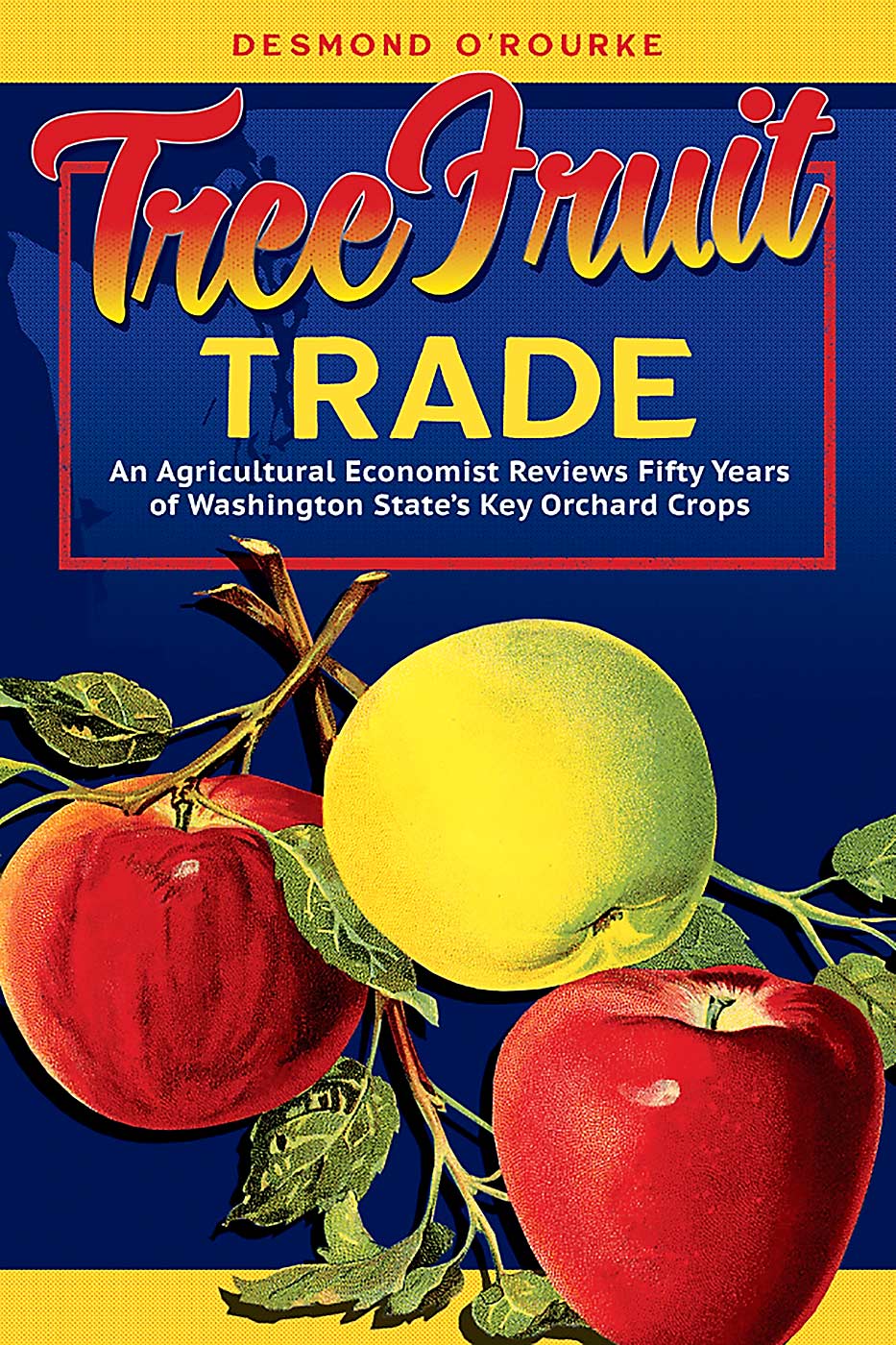The book, “Tree Fruit Trade” published in 2022 by the Washington State University Press, chronicles my 50-plus years of conducting economic and business analyses on the continuing transformation of the Washington fruit industry. It has morphed gradually from a rural-focused industry of thousands of small growers and packers to a world leader in the production, packing and marketing of apples, pears and sweet cherries.
The Washington tree fruit industry has overcome many setbacks, like the devastating 1969–70 freeze, the energy crisis of the 1970s, the Alar scare of the 1980s and the COVID-19 disruptions of the 2020s. It has adapted to increasingly intrusive regulation, from the establishment of the U.S. Environmental Protection Agency and Occupational Safety and Health Administration in the 1970s to the Food Safety Modernization Act of today. It has met the challenges of successive disruptions to the retail food business from Walmart, Costco, Aldi and Amazon. In export markets, it has battled low-cost Chinese exports, numerous other aggressive competitors and a changing array of trade barriers. It has been innovative in adapting a succession of new varieties and implementing new technologies in the orchards and packing houses.
However, the secret weapon that has given Washington state a unique advantage over its global competitors has been its growing footprint in the Columbia Basin, described in greater detail in the following excerpt. None of Washington’s major competitors has enjoyed access to so much additional irrigated land that is suitable for fruit production.
Emergence of the Columbia Basin revolutionizes Washington state fruit production

The expansion of exports in the late 1970s brought both higher current prices and profits and a spirit of renewed optimism to the Washington state fruit industry. Most of the early beneficiaries were firms in the traditional growing regions in North Central Washington and the Yakima Valley.
However, changes in tax law had made investment in perennial crops, like apples, pears and sweet cherries, more attractive to outside investors, including special syndicates not traditionally involved with the fruit industry. In a period of rapid inflation, these could establish a new orchard, sell the orchard after it reached full bearing, and use various tax devices and credits to deduct most of the establishment costs from the profit on the sale. It was a good deal for such outsiders until the loophole was closed in President Reagan’s tax reforms of 1985.
Ray Hunter, the fruit extension agent in the Columbia Basin, had long advocated the potential for fruit growing in the basin, but new plantings remained small. However, the change in the tax law brought a flood of external investment, particularly in apple production. In just five years, between 1979 and 1983, over 15,000 acres of apples were planted in the Columbia Basin.
While not all of the external investments were successful, due to lack of experience in the fruit industry and poor management, they demonstrated that the basin had many natural advantages for production of apples, pears and sweet cherries. The basin had large expanses of flat land that could be converted from low-value crops, like wheat and hay, to higher-value fruit production. It had a guaranteed water supply from the Columbia Basin irrigation project.
While some new packing plants were built in the basin to service the added orchards, improvements in transportation meant that fruit could also be safely hauled to established packing plants in Yakima or Wenatchee. Much of the marketing continued to be conducted from those two cities.
The most recent, 2017, Washington Tree Fruit Acreage Report, showed that 38.6 percent of the state’s apple acreage was in the Yakima Valley, but the Columbia Basin was a close second with 36.2 percent. The Wenatchee district had faded to 19 percent. The basin also accounted for 22.7 percent of the sweet cherry acreage.
The shrinkage in the North Central Washington district resulted from several factors. Urban sprawl ate up most orchards in the Wenatchee metro area. To the north, Rocky Reach and Azwell hydroelectric projects inundated hundreds of acres, and further north, orchards in the Okanogan area were slow to grasp the opportunities for newer varieties.
The Columbia Basin has added much productive capacity to the Washington state fruit industry, something that few of its global competitors have enjoyed. Many established firms from the Wenatchee and Yakima areas have acquired acreage in the Columbia Basin that they have been able to use to increase the volumes of fruit that they control, and to improve economies of scale in their packing and marketing activities.
—by Desmond O’Rourke
Excerpted from “Tree Fruit Trade” by Desmond O’Rourke, published by WSU Press in 2022. The book can be purchased at: wsupress.wsu.edu/product/tree-fruit-trade.
Want more apple history?
Another new book documents the early days of the Washington apple industry. “The Washington Apple: Orchards and the Development of Industrial Agriculture,” by Amanda Van Lanen, was published last year by the University of Oklahoma Press.
Van Lanen, an associate professor of history at Lewis-Clark State College in Lewiston, Idaho, explores how Washington growers built a specialized agricultural industry, replacing backyard groves and small orchards commonly found on most farms in the 19th century.
“Washington’s success in producing apples was not a happy accident of nature,” Van Lanen writes. “Apples are not native to Washington, any more than potatoes are to Idaho or peaches to Georgia. In fact, Washington apple farmers were late to the game, lagging their Eastern competitors.”
Early Washington growers faced many challenges, for irrigation, transportation and labor, among others. With crucial help from railroads, “Washington farmers transformed themselves into ‘growers’ by embracing new technologies and marketing strategies. By the 1920s, the state’s growers managed not only to innovate the industry but to dominate it,” she writes.
You can purchase “The Washington Apple” from the University of Oklahoma press at: bit.ly/oupress-the-washington-apple.
—by Kate Prengaman






Leave A Comment